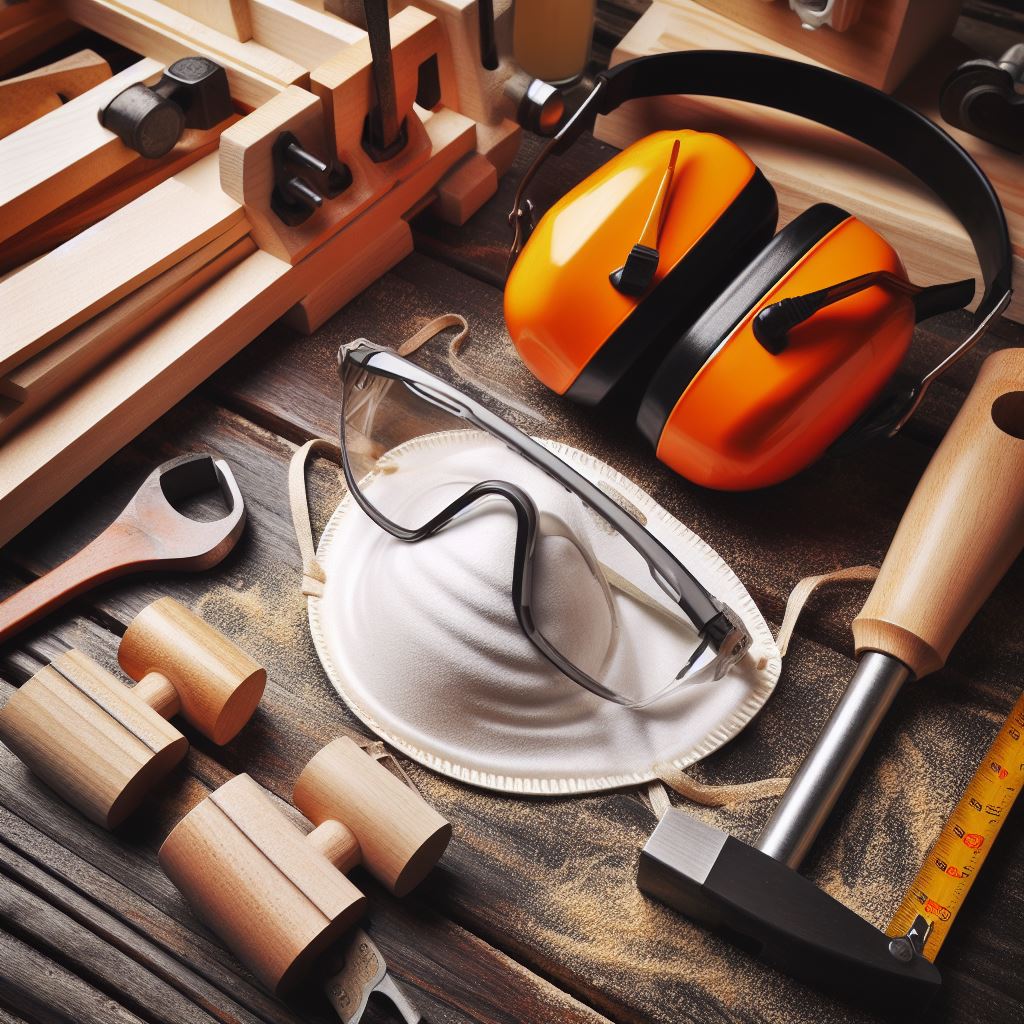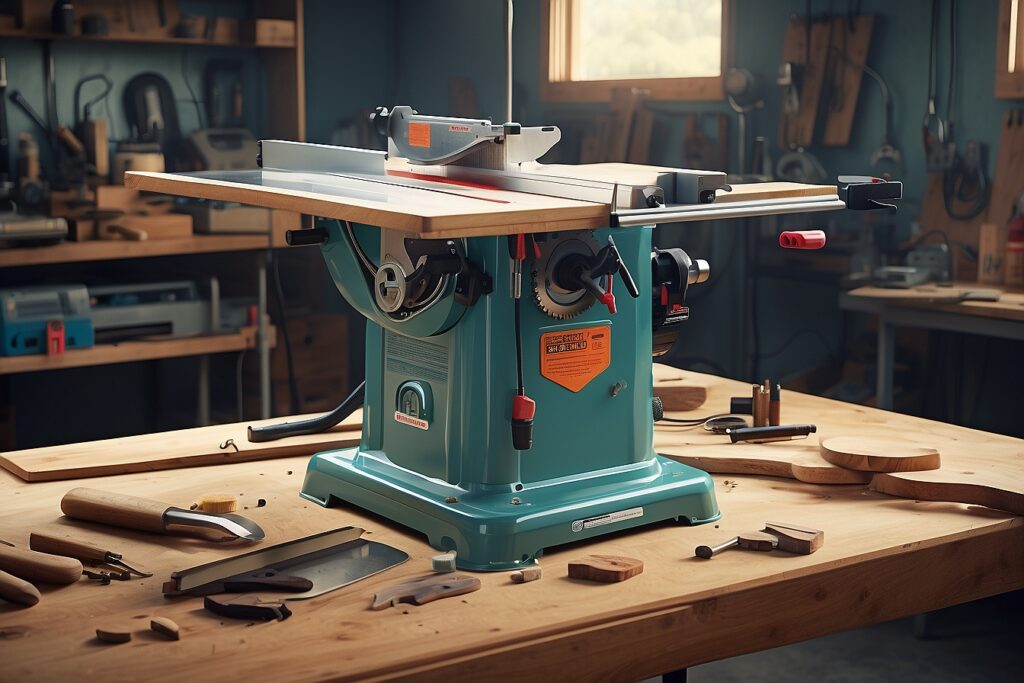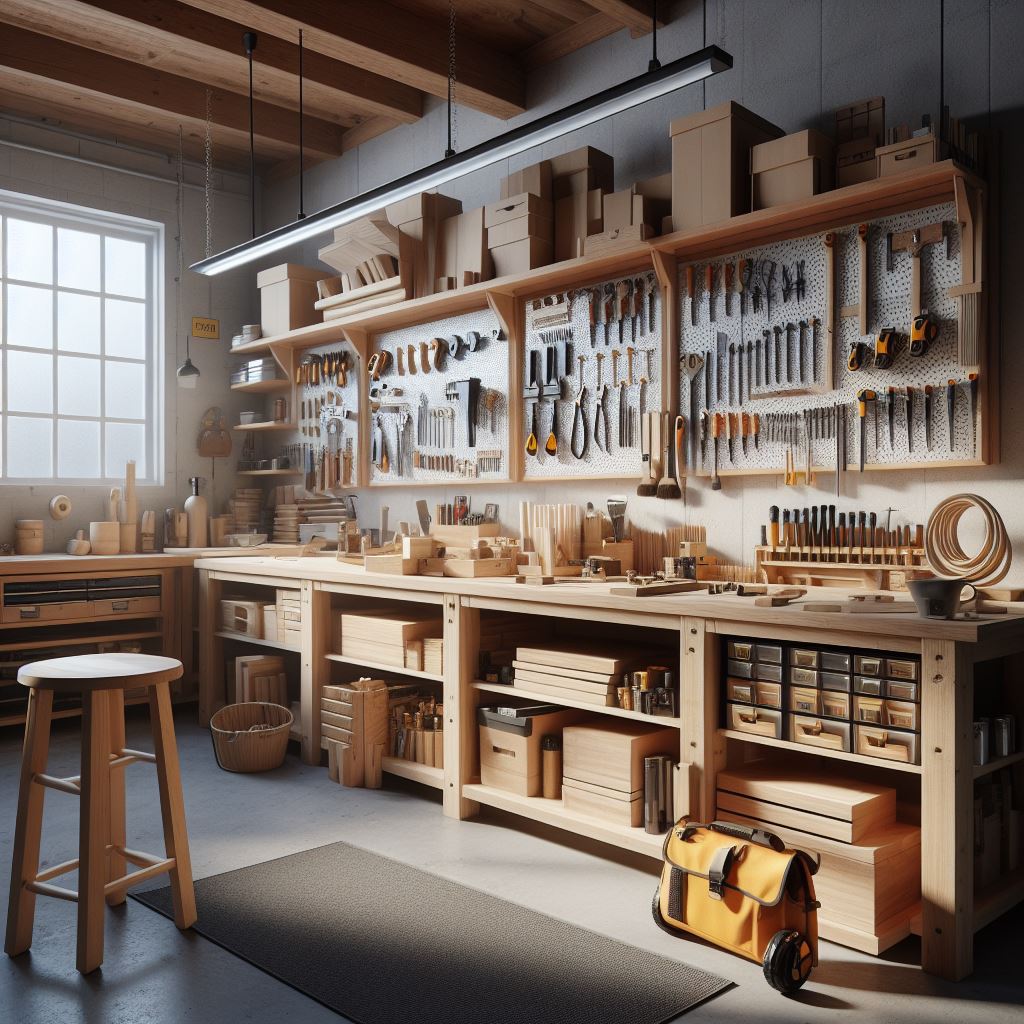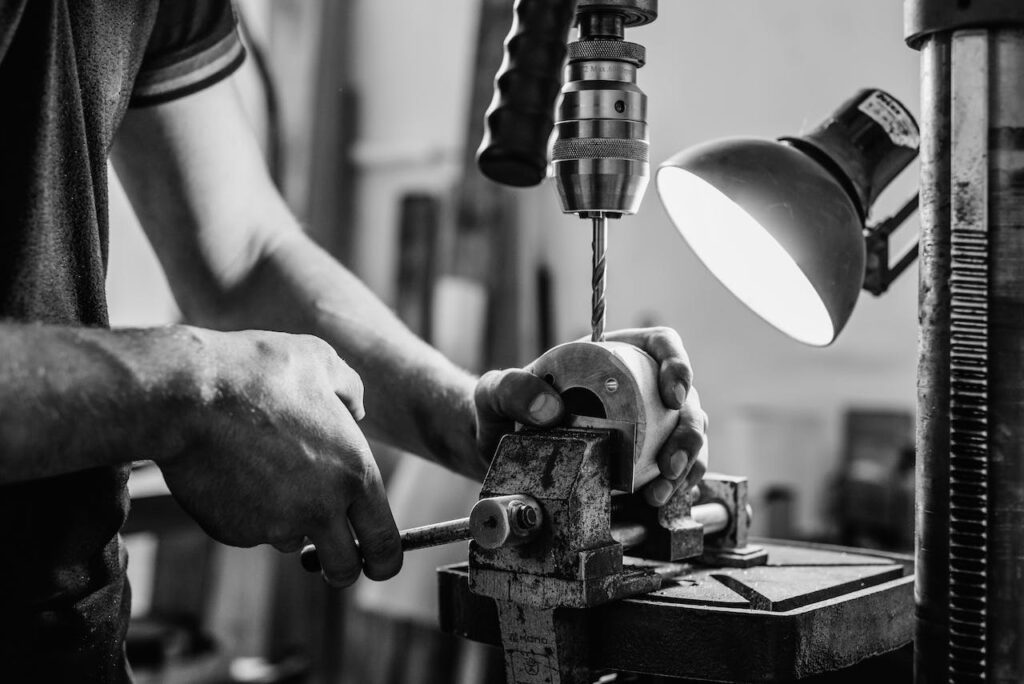
- Introduction
- Key Takeaways
- Choose the Right Tool and Accessories
- Master Proper Operating Techniques
- Equip Yourself with Safety Gear
- Dress Appropriately
- Perform Thorough Safety Checks
- Create a Clean, Uncluttered Workspace
- Allow Equipment to Reach Full Speed Before Cutting
- Secure All Workpieces Properly
- Maintain Personal Control Over Projects
- Take Your Time and Focus
- Install Safety Accessories and Upgrades
- Unplug Tools During Service Procedures
- Check Wood Quality
- Seek Additional Guidance
- Conclusion & Further Actions
- Frequently Asked Questions (FAQs)
Introduction
Woodworking with power tools like table saws, miter saws, and sanders can be extremely rewarding. However, operating these heavy machinery comes with risks if proper safety precautions are not taken. According to the U.S. Consumer Product Safety Commission (CPSC), nearly 500,000 workshop injuries are reported annually in the United States alone.
Applying safety measures like wearing protective equipment, understanding tool capacities, and maintaining a clean workspace is crucial. This guide outlines 17 vital safety tips that all woodworkers should follow for safe operation of power tools. Adhering to these simple practices can mean the difference between an efficient and satisfying build versus a dangerous – or even deadly – situation.
Key Takeaways
- Always wear safety glasses and hearing protection when operating power tools
- Make sure you are properly trained on each tool before using
- Never wear loose clothing that can get caught in spinning blades
- Clean tools and workspaces regularly to prevent accidental activation
- Unplug equipment before changing blades, bits, belts, or making adjustments
Choose the Right Tool and Accessories
Before beginning a woodworking project, it is essential to verify you have the proper power tool and blades/bits for the task at hand. Using a table saw outfitted with the incorrect blade for thicker, harder lumber can result in major kickback accidents down the line.
Tips for Selecting Suitable Power Tools
- Always refer to tool capacities outlined in instruction manuals prior to operations
- Choose blades/bits in the proper diameter, arbor size, kerf width, material, and number of teeth
- Use only accessories specifically designed for your tool’s make and model
Master Proper Operating Techniques
All power tools – especially larger benchtop and freestanding varieties like lathes, planers, jointers – have immense cutting forces and torque levels. Attempting to operate this heavy machinery without the proper training can quickly amplify small mistakes into severe accidents. Seeking formal guidance from experienced woodworkers, manufacturers, local workshops, or home improvement stores is highly advisable.
Top Training Tips
- Always thoroughly read provided safety and operation manuals
- Schedule a session with an experienced builder or manufacturer rep. to guide your initial uses of unfamiliar equipment
- Sign up for ongoing power tool courses as new methods and innovations emerge
- Periodically revisit fundamentals like kickback causes, precision settings, guards, jigs, and personal protective equipment (PPE)
Equip Yourself with Safety Gear
Operating power tools without proper safety attire poses severe risks of bodily harm caused by sharp edges, fast-moving components, and flying debris. Wearing correctly-sized personal protective equipment is required by OSHA standards and vital for averting injury.

Mandatory Safety Gear
- Safety glasses – Opt for ANSI Z87+ compliant eyewear with wrap-around lens protection
- Hearing protection – Choose earmuffs or earplugs with noise reduction ratings (NRR) above 25 decibels
- Dust masks/respirators – Select equipment with N95 filtration for microscopic dust and allergen protection
- Face shields – Full face guards prevent debris from causing facial and eye region wounds
- Hand and arm guards – Wear suitably thick cut-resistant gloves and arm protectors near cutting zones
- Steel-toed boots – Reinforced footwear shields against heavy dropped workpieces and sharp items underfoot
Dress Appropriately
Large rotating router bits, ripping table saw blades, and other woodworking power tool components reach extremely high speeds and have immense cutting power. Any dangling apparel articles like loose shirts, flowing dresses, ties, scarves, jewelry chains, or long hair can easily become snagged – pulling body parts into the equipment.
To avoid catches, all operators should wear well-fitted clothes free of dangling pieces, keep hair tied back securely, and remove all accessories when working within tool danger zones. Staying covered in snug, long pants and tops helps shield limbs as well.
Key Garment Tips
- Tuck in or tightly secure shirts/tops
- Wear snug-fitting pants or jeans
- Secure long hair tightly in a bun or under a hat
- Remove all jewelry, watches, scarves, ties, etc.
Perform Thorough Safety Checks
Accidental starting, unexpected movements, misaligned guides, faulty power transfers, and loose components during operation all set the stage for severe injury risks. Forming consistent pre-use safety check habits eliminates these dangerous power tool mistakes through early problem identification.

Standard Inspection Checklist
- Power transfers – Ensure cords are sized sufficiently, free of cuts, plugged into dedicated circuits, and operating switches work properly
- Mechanical function – Make sure clamps, fences, mounts, belts, gears, chucks, and other moving parts operate smoothly
- Guides/guards – Confirm riving knives, splitters, anti-kickback pawls, featherboards, and other shielding mechanisms are secure
- Alignment – Check for smooth table insert transitions, even/stable legs, trued systems, and properly set t-tracks
- Fasteners/bolts – Re-check the tightness of any mounting hardware throughout machines
- Housekeeping – Clear away scraps, dust, chips, tools, and other foreign objects around equipment work zones
Create a Clean, Uncluttered Workspace
Workspace organization is also imperative for power tool safety. Clean, open floor plans and workbenches prevent accidental equipment starting and give full visibility for controlling projects through complete cuts. Moving materials, tools, scraps, dust, chips, power cords, accessories, and other items out of equipment operational zones drastically minimizes risks.

Designating specific storage locations keeps everything neat:
- Use wall-mounted pegboards, cabinets, carts & lockers for tools/accessories
- Store materials and lumber on anchored racks, not loose on the floor
- Mount dust collectors like shop vacuums directly to reduce debris
- Unplug tools and tightly coil cords when not in use
- Keep fire/emergency pathways unimpeded
- Position tools at least 3 ft. apart and away from walkways to allow safe operating room
Allow Equipment to Reach Full Speed Before Cutting
One of the most common – and hazardous – power tool mistakes involves forcing cutting too soon after turning equipment on. Upon startup, saw blades, bits, and belts require a brief time to overcome inertia and accelerate to full operating velocities. Jamming lumber, composites, or stock against blades/bits still accelerating causes severe kickback accidents.
Always allow the power tool to reach full speed before introducing material contact during any operation – striving for at least 5+ seconds of stable rotation. Slow, gradual contact also minimizes dangerous torque reactions as well. Proper pacing prevents disastrous binding scenarios.
Startup & Speed Safety Tips
- Wait until rotation
indicators verify full velocity is met
- Carefully ease workpieces into blades/bits during the first cuts
- Utilize extended push sticks/blocks to maximize kickback protection
- Set speed controllers to match velocities suitable for specific materials
Secure All Workpieces Properly
Without proper fixturing and clamping arrangements, lumber workpieces can dangerously shift mid-operation – posing critical crushing, cutting, and entanglement risks. Choosing suitable vises/clamps designed specifically to secure irregular stock for each tool (alongside applicable guarding accessories) provides the required stability for safe execution under tool forces.

Workpiece Fixturing Tips
- Table Saws – Position auxiliary fences or miter gauges snugly and lock T-track bolts through entire cuts
- Sanding/Grinding – Adhere stock to sliding fixtures or hold small pieces with specialized pliers/clamps
- Routers – Clamp pieces or fixtures tightly; If free-handing, use proper handles and work directionality
- Lathes – Solidly mount blanks between points/spur center and tailstock; Position tool rest extremely close before addressing
Maintain Personal Control Over Projects
Losing physical contact when operating brings tremendous peril. Kickbacks can fling lumber at deadly speeds in milliseconds. Binding scenario pressure unleashing can instantly crush fingers or collide limbs with components. Uncontrolled spin direction changes sensorily overwhelm operators.
Retain firm grasp of all stock with both hands and stable footing throughout every equipment-contacting second of operation. Never release pieces mid-cut or step away distracted elsewhere, even briefly. Maintain the fullest possible engagement mentally and physically. Stop to reposition hands before they reach rotation vectors.
Contact Control Tips
- Grip workpieces on both lateral sides with one hand on each end
- Use extended accessories like push sticks for added stability
- Stand with control and leverage to resist potential kickbacks
- Keep hands at least 3 inches from spinning blades
- Engage blade rotation shutoffs instantly if contact control becomes compromised
Take Your Time and Focus
Fatigue affects judgment, reaction times, tool handling, and mental sharpness – severely impeding safe power tool operation skills. Rushing through cuts or impatient movements greatly magnify kickback probabilities as well. Working while exhausted or hurried tries the worst possible scenarios.
Always calmly and completely focus attention on power tool cutting tasks exclusively. Never multitask or divert concentration from risk zones, even briefly. Maintain solid stances and leverage advantages allowing instinctive reactions. If feeling drained or antsy, stop operations and walk away until concentration fully recharges.
Attentiveness & Pacing Tips
- Strive for consistent breath pacing and controlled heart rates
- Pause operations if attention wavers or frustration builds
- Work only during peak mental and physical sharpness periods
- Avoid distracting music, conversations, or rushing thought pressures
- Revisit stock dimensions/needs before executing each cut
Install Safety Accessories and Upgrades
While power tools ship with baseline shields and guards to meet codes, incorporating specialized add-ons greatly improves protection against accidents. Upgraded aftermarket accessories deliver considerably expanded kickback, tension, entanglement, and contact precautions.
Recommended Safety Upgrades
- Table Saws – Riving knives, quick-release splitters, anti-kickback pawls, featherboards
- Band Saws – Enhanced guards, roller guides, braking wheels
- Jointers – Cutterhead covers
- Lathes – Improved chuck/faceplate shields, safety drive centers
- Sanders – Metal skins, thermal overload protection
- Router Tables – Plunge bases, safety stops, swing fences
Unplug Tools During Service Procedures
Power tool components like arbors, belts, blades, routers bits, table inserts, fences, motors, gears, bearings, and chucks require occasional maintenance, adjustments, replacements or general service over their lifespan to uphold precision and safety assurances. However, these areas contain immense cutting forces and contact hazards when rotated.
Always physically unplug equipment from electrical outlets before clearing jams, replacing blades/bits, lubricating parts, checking alignments, or any tasks requiring contact near moving linkages. Portable, handheld tools should have batteries fully removed as well during service. This prevents accidental starting triggers from activating spin cycles.
Physically disconnect all power sources to tools before attempting service checks, adjustments or replacements
Check Wood Quality
Attempting to process warped, bowed, twisted, knotted or improperly joinery-aligned stock poses unnecessary binding and kickback risks. Low-quality materials require extra preparation to flatten using jointers and planers first before cutting. Trying to force bad wood against power tools causes accidents.
Always thoroughly inspect boards first and address bowing, cupping, twisting and other irregularities through adequate milling beforehand. Confirm moisture is suitable for indoor use as well, or drying and acclimation periods may be needed. Avoid cutting around faulty areas and scrap problem wood sections entirely when possible.
Checking for warped areas, knots, and alignment issues first prevents future kickback risks
Material Inspection & Prep Tips
- Carefully check used pallet or scrap wood for defects, foreign objects, and moisture
- Mill all stock flat, straight and square before power tool cutting
- Align joinery components on marking/assembly tables before resizing
- Slowly feed timber varieties and burls requiring extra care
- Set moisture meters targets to 6-8% for furniture woods
Seek Additional Guidance
No guide can provide completely comprehensive power tool safety guidance across every possible woodworking equipment scenario. Diverse applications involving unique aftermarket jigs, homemade setups, antiquated tools, and material-specific challenges exist. Further personalized advice from experienced woodworkers, manufacturers, instructors and demonstrators will prove invaluable regarding enhanced, tool-specific direction.
Consulting personally with skilled mentors provides valuable insights into equipment
Valuable knowledge transfer opportunities surrounding precision adjustments, recommended accessories, operational best practices, specialized techniques, and accident insight await through exchanges with trusted experts. Their lessons learned can prevent repeating detrimental experiences. All successful woodworkers owe guidance credits to their own respected advisors – dont overlook this crucial asset.
Conclusion & Further Actions
While potentially intimidating at first, applying these fundamental safety tips empowers woodworkers to use power tools efficiently while also preventing severe injury risks. As experience progresses, reminders help strengthen positive habits and refresh vital protocols to carry forward through future projects.
For further learning, readers should:
- Bookmark/save safety-focused reference materials provided with tools and accessories for regular review
- Watch online video demos before attempting higher-risk operations independently
- Inquire manufacturers about equipment-specific recommendations
- Attend recurring safety training workshops through local stores and guild events
Consistently prioritizing safety translates directly into confident, mastery-level performance. Planning appropriate protocols ultimately enables woodworkers to think creatively through ever-more complex builds. Stay safe – have fun!
Article by: Safety Sam; Published on: November 26, 2023; Keywords: power tool safety tips; woodworking power tools safety; safe operation of woodshop power tools
Frequently Asked Questions (FAQs)
Here are answers to 7 of the most common questions regarding power tool safety protocols for woodworking applications:
Why do I still need eye protection even when wearing a face shield?
Face shields protect the front facial area from debris but leave the optical sides exposed. Flying particles can still intrude untouched zones and damage eyes. Always wear rated safety glasses or eyewear underneath shields as added coverage.
Do I need hearing protection when wearing a dust mask?
Yes – dust masks/respirators only protect lung airways from microscopic particles, not eardrums from loud equipment noise. Properly inserted earplugs combined with protective

